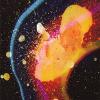I'm having trouble with my tone mapping (currently using Reinhard's operator). For testing, I used an HDR cube map and got results to match various demos (DX SDK and MJP's
Where I am seeing issues is when I integrated it into my engine. In particular, given a daytime seen (not looking at a light source), the non-tonemapped image (left) looks more detailed in my opinion than the tonemapped version (right). If I plot the Reinhard curve x/(1+x) I think I can see how non-HDR values are getting shifted darker and I'm probably losing precision in this transformation.
Right now in my engine, the only HDR values are light sources? So how do I keep good image detail when I have scenes with mostly LDR values to begin with?
Is Filmic tone mapping the solution? I actually like the way Reinhard looks for the HDR cube map, just not scenes with LDR values.











